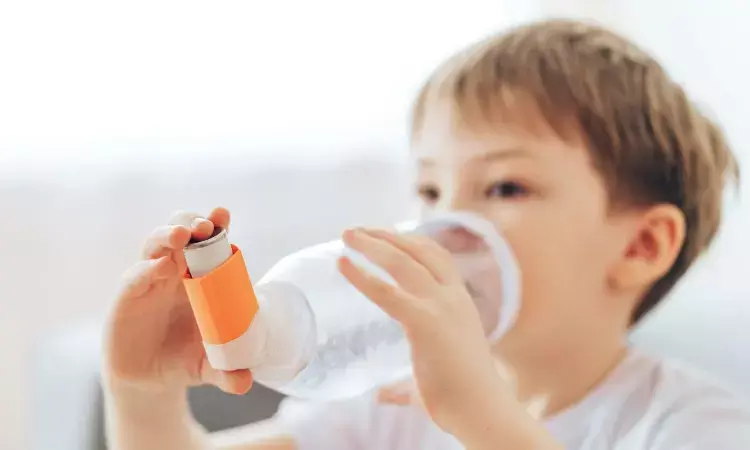- Home
- Medical news & Guidelines
- Anesthesiology
- Cardiology and CTVS
- Critical Care
- Dentistry
- Dermatology
- Diabetes and Endocrinology
- ENT
- Gastroenterology
- Medicine
- Nephrology
- Neurology
- Obstretics-Gynaecology
- Oncology
- Ophthalmology
- Orthopaedics
- Pediatrics-Neonatology
- Psychiatry
- Pulmonology
- Radiology
- Surgery
- Urology
- Laboratory Medicine
- Diet
- Nursing
- Paramedical
- Physiotherapy
- Health news
- Fact Check
- Bone Health Fact Check
- Brain Health Fact Check
- Cancer Related Fact Check
- Child Care Fact Check
- Dental and oral health fact check
- Diabetes and metabolic health fact check
- Diet and Nutrition Fact Check
- Eye and ENT Care Fact Check
- Fitness fact check
- Gut health fact check
- Heart health fact check
- Kidney health fact check
- Medical education fact check
- Men's health fact check
- Respiratory fact check
- Skin and hair care fact check
- Vaccine and Immunization fact check
- Women's health fact check
- AYUSH
- State News
- Andaman and Nicobar Islands
- Andhra Pradesh
- Arunachal Pradesh
- Assam
- Bihar
- Chandigarh
- Chattisgarh
- Dadra and Nagar Haveli
- Daman and Diu
- Delhi
- Goa
- Gujarat
- Haryana
- Himachal Pradesh
- Jammu & Kashmir
- Jharkhand
- Karnataka
- Kerala
- Ladakh
- Lakshadweep
- Madhya Pradesh
- Maharashtra
- Manipur
- Meghalaya
- Mizoram
- Nagaland
- Odisha
- Puducherry
- Punjab
- Rajasthan
- Sikkim
- Tamil Nadu
- Telangana
- Tripura
- Uttar Pradesh
- Uttrakhand
- West Bengal
- Medical Education
- Industry
Impulse oscillometry may detect exercise induced bronchoconstriction in asthmatic kids: Study

A new study conducted by Samriti Gupta and team found that the greatest discriminating power among all impulse oscillometry (IOS) parameters for detecting exercise-induced bronchoconstriction (EIB) in children with asthma was a percentage change in R5 with a cut-off value of 14.1% rise post-exercise. The findings of this study were published in The Journal of Asthma.
Spirometry measurements need active cooperation and may be inaccurate in patients following an activity challenge. The technique of impulse oscillometry does not need maximum inhalation and force expiration. As a result, this study was carried out in order to assess the discriminatory value of various impulse oscillometry parameters, as well as the optimal parameter's cut-off value for diagnosing exercise-induced bronchoconstriction in children with asthma.
From October 2016 to March 2018, a cross-sectional study of children aged 6 to 15 with asthma was undertaken in India. A total of 155 youngsters were enrolled and exposed to pre-exercise IOS and spirometry, followed by a free running treadmill test as an activity challenge. During the exercise challenge test, all children achieved minute ventilation >17.5-21 times FEV1. IOS and spirometry were then conducted 10 ± 2, 20 ± 2, and 30 ± 2 minutes after the activity challenge. EIB was defined as a 10% decrease in FEV1 within 30 minutes of exercise. The youngsters were separated into two groups for analysis: "EIB Present" and "EIB Absent."
The key findings of this study were:
1. In our study, the prevalence of EIB was 20.95% (n = 22). Among the IOS measures, R5max percentage during 30 minutes post-exercise (AUC 0.74; 95% CI: 0.64, 0.84) showed the strongest discriminating power for diagnosing EIB.
2. For detection of EIB, a 14.1% rise in R5 during 30 minutes of exercise was found (sensitivity-95.45%, specificity-50.6%, PPV-33.87%, and NPV-97.67%).
Reference:
Gupta, S., Mukherjee, A., Gupta, S., Jat, K. R., Sankar, J., Lodha, R., & Kabra, S. (2022). Impulse Oscillometry (IOS) for Detection of Exercise Induced Bronchoconstriction in Children with Asthma Ages 6-15 years. In Journal of Asthma (pp. 1–15). Informa UK Limited. https://doi.org/10.1080/02770903.2022.2145219
Neuroscience Masters graduate
Jacinthlyn Sylvia, a Neuroscience Master's graduate from Chennai has worked extensively in deciphering the neurobiology of cognition and motor control in aging. She also has spread-out exposure to Neurosurgery from her Bachelor’s. She is currently involved in active Neuro-Oncology research. She is an upcoming neuroscientist with a fiery passion for writing. Her news cover at Medical Dialogues feature recent discoveries and updates from the healthcare and biomedical research fields. She can be reached at editorial@medicaldialogues.in
Dr Kamal Kant Kohli-MBBS, DTCD- a chest specialist with more than 30 years of practice and a flair for writing clinical articles, Dr Kamal Kant Kohli joined Medical Dialogues as a Chief Editor of Medical News. Besides writing articles, as an editor, he proofreads and verifies all the medical content published on Medical Dialogues including those coming from journals, studies,medical conferences,guidelines etc. Email: drkohli@medicaldialogues.in. Contact no. 011-43720751


